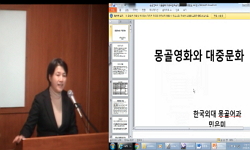The 100-year history of the Military regime weakened Goryeo's royal authority. Choi's political power trampled on the king's authority and maintained the authority of the royal court to avoid the attack of his political opponents and to surpass the po...
http://chineseinput.net/에서 pinyin(병음)방식으로 중국어를 변환할 수 있습니다.
변환된 중국어를 복사하여 사용하시면 됩니다.
- 中文 을 입력하시려면 zhongwen을 입력하시고 space를누르시면됩니다.
- 北京 을 입력하시려면 beijing을 입력하시고 space를 누르시면 됩니다.

13~14세기 몽골과 고려의 부마들 ― 통혼의 정치적 의미와 고려왕권의 성격 재론 ― = The Relationship between the Mongol Empire and Goryeo Kings as Sons-in-Law of the Emperor in the Thirteenth and Fourteenth Centuries ― A Reconsideration of the Political Meanings of Marriages between Two Dynasties and Characteristics of the Goryeo Kings
한글로보기https://www.riss.kr/link?id=A106514714
-
저자
최윤정 (경북대학교)
- 발행기관
- 학술지명
- 권호사항
-
발행연도
2019
-
작성언어
Korean
-
주제어
Military regime ; Mongol ; Goryeo King ; Intermarriage ; Son-in-Law [of the Emperor] ; reinstate ; King Shim ; Wang Go ; 무신 ; 몽골 ; 고려국왕 ; 통혼 ; 부마 ; 중조 ; 심왕 ; 왕고
-
등재정보
KCI등재
-
자료형태
학술저널
- 발행기관 URL
-
수록면
83-118(36쪽)
-
KCI 피인용횟수
5
- DOI식별코드
- 제공처
-
0
상세조회 -
0
다운로드
부가정보
다국어 초록 (Multilingual Abstract)
The 100-year history of the Military regime weakened Goryeo's royal authority. Choi's political power trampled on the king's authority and maintained the authority of the royal court to avoid the attack of his political opponents and to surpass the power of the king. Under the long war and oppression of the Mongols, the crown prince (King Won-jong) entered the Mongol Court. After the death of King Go-jong, in 1260 Won-jong took the throne with full support from Kubilai. However, he was demoted by Im-yeon in 1269 in an unstable symbiotic relationship with the Military regime, and was restored by Mongolian authority.
However, This accident leads that Crown Prince (King Chungnyeol) asked Kubilai to marry the princess and thus become his son-in-law. The close relationship between Mongolia and Goryeo King actually began at this time. Becoming a son-in-law of the emperor means “the one who deserves to be king among the Dragon’s Descendants.” As a result, the political history of the late Goryeo Dynasty developed into a political dispute between the emperor's sons-in-law. The reinstate(重祚) is the result of political wrangling among the ‘King of Emperor’s sons-in-law’.
However, in terms of relations with Mongolia, marriage was the most important but not the only one. King Chungseon, who is a mixed-race prince, has a special “blood relationship” with the Mongolian royal family as the grandson of Kubilai in addition to his marriage. Having lost his throne due to his feud with the princess, King Chungseon formed a strong “background” (根脚) by helping Emperors Mujong (武宗) and Renjong (仁宗), thus overcoming the instability of the marriage and regaining the authority of Goryeo King.
Having gained great power as king, King Chungseon stayed on the Dadu (大都) for a long time and practiced Remote control rule (遙領統治). But under constant pressure to return to Goryeo, King Chungseon nominated the king (Chungsuk) and the Crown prince (Wang Go) simultaneously in 1313. Furthermore, they married the princess in the same year in 1316. As a result, King Chungseon created two sons-in-law of the emperor, who deserves to be king among the Dragon’s Descendants at the same time.
Shim Wang (瀋王) Wang Go (王暠) was favored by King Chungseon and became a son-in-law of the Emperor through his marriage to the princess, so he was entitled to become a king among the Dragon’s Descendants. Later, however, Wang Go lost his position as a Crown prince. To regain his right to succeed to the throne, he was forced to face King Chungsook. The princess of the Wang Go was much higher in stature than the princess of King Chungsuk. By participating in the imperial struggle within the empire that broke out after the death of Emperor (泰定帝) in 1328, Wang Go sought to form a another strong “background” like King Chungseon. But it eventually failed.
Relationship which had been based on marriage, have collapsed as the growth of Empress Ki(奇)’s power, which threaten the Goryeo Dynasty, and the “breedy prince” of her child, sought the next throne. At this time, Goryeo King’s authority expanded to the royal authority in response to the challenge of Ki’s power, who threatened the Yuan empire. Now, among the Dragon’s Descendants there is no need to be a son-in-law of the emperor in order to succeed to the Goryeo’s throne. Instead, with the emphasis on legitimate and lineal relatives between the royal family, Wang Go was already regarded as the ‘collateral line’ who sought the throne at that time.
King Gongmin lifted his pigtail and exotic costume in 1352, the following year after his ascension to the throne. In short, until King Chungnyeol wore pigtail and King Gongmin took it off, the Mongolian emperor was a political supporter of the Goryeo kingship. The marriage was the most important foundation in the relationship between Goryeo kings and Mongol. The breakdown of the marriage relationship has...
참고문헌 (Reference)
1 김성준, "한국중세정치제도사연구" 一潮閣 1985
2 김형수, "충혜왕의 폐위와 고려 유자儒者들의 공민왕 지원 배경" 한국국학진흥원 (19) : 539-569, 2011
3 김당택, "이의민정권의 성격" 83 : 1979
4 윤용혁, "무인정권, 그리고 전란 속의 왕권 -고려 고종(1192-1259) 연구-" (사)한국인물사연구회 (12) : 105-140, 2009
5 에드워드 슐츠, "무신과 문신" 글항아리 2014
6 김호동, "몽골제국과 고려" 서울대학교출판부 2007
7 김호동, "몽골제국과 ‘大元’" 역사학회 (192) : 221-253, 2006
8 金惠苑, "려원왕실통혼의 성립과 특징—원공주출신왕비의 가계를 중심으로" 24ㆍ25 : 1989
9 고병익, "동아교섭사의 연구" 서울대학교출판부 1970
10 민현구, "공민왕의 반원적 개혁정치에 대한 일고찰: 배경과 발단" 68 : 1989
1 김성준, "한국중세정치제도사연구" 一潮閣 1985
2 김형수, "충혜왕의 폐위와 고려 유자儒者들의 공민왕 지원 배경" 한국국학진흥원 (19) : 539-569, 2011
3 김당택, "이의민정권의 성격" 83 : 1979
4 윤용혁, "무인정권, 그리고 전란 속의 왕권 -고려 고종(1192-1259) 연구-" (사)한국인물사연구회 (12) : 105-140, 2009
5 에드워드 슐츠, "무신과 문신" 글항아리 2014
6 김호동, "몽골제국과 고려" 서울대학교출판부 2007
7 김호동, "몽골제국과 ‘大元’" 역사학회 (192) : 221-253, 2006
8 金惠苑, "려원왕실통혼의 성립과 특징—원공주출신왕비의 가계를 중심으로" 24ㆍ25 : 1989
9 고병익, "동아교섭사의 연구" 서울대학교출판부 1970
10 민현구, "공민왕의 반원적 개혁정치에 대한 일고찰: 배경과 발단" 68 : 1989
11 김광철, "고려후기 세족층 연구" 동아대학교출판부 1991
12 김당택, "고려의 무인정권" 국학자료원 1999
13 정용숙, "고려시대의 后妃" 민음사 1992
14 이명미, "고려․ 원 왕실통혼의 정치적 의미" 49 : 2003
15 이개석, "고려-대원 관계 연구" 지식산업사 2013
16 김광철, "고려 충혜왕의 왕위계승" 28 : 1995
17 이강한, "고려 충혜왕대 무역정책의 내용 및 의미" 한국중세사학회 (27) : 45-93, 2009
18 이승한, "고려 충선왕의 심양왕 피봉과 재원 정치활동" 2 : 1988
19 박재우, "고려 충선왕대 정치운영과 정치세력 동향" 29 : 1993
20 박재우, "고려 최씨정권의 권력행사와 왕권의 위상" 한국중세사학회 (46) : 137-185, 2016
21 김당택, "고려 최씨무인정권과 국왕" 42 : 1986
22 서각수, "고려 최씨 무인정권과 국왕" 숭실사학회 (29) : 37-73, 2012
23 윤용혁, "고려 삼별초의 대몽항쟁" 일지사 2000
24 나만수, "고려 무인집권기의 국왕과 문반" 63 : 1987
25 황병성, "고려 무인정권기 연구" 신서원 1998
26 홍승기, "고려 무인정권 연구" 서강대학교출판부 1995
27 민병하, "고려 무신정권 연구" 성균관대학교출판부 1990
28 森平雅彦, "高麗王家とモンゴル皇族の通婚關係に關する覺書" 67 (67): 2008
29 森平雅彦, "高麗王位下の基礎的考察-大元ウルスの一分權勢力として高麗王家-" 36 : 1998
30 北村秀人, "高麗時代の瀋王についての一考察" 24 (24): 1973
31 민현구, "高麗政治史論" 고려대학교출판부 2004
32 김혜원, "高麗後期 瀋王 硏究" 梨花女子大學校 大學院 1999
33 "高麗史"
34 이정란, "高麗 王家의 龍孫意識과 왕권의 변동" 고려사학회 (55) : 7-41, 2014
35 鄭希仙, "高麗 忠肅王代 政治勢力의 性格" 42 : 1990
36 김광철, "高麗 忠宣王의 現實認識과 對元活動−충렬왕24년 受禪 이전을 중심으로" 11 : 1986
37 고병익, "高麗 忠宣王의 元 武宗옹립" 17ㆍ18 : 1962
38 이익주, "高麗 對蒙抗爭期 講和論의 硏究" 151 : 1996
39 森平雅彦, "駙馬高麗國王の成立-元朝における高麗王の地位についての豫備的考察" 17 (17): 1998
40 최윤정, "駙馬國王과 國王丞相 - 13-14세기 麗元관계와 고려왕조 國體 보존 문제 이해를 위한 새로운 모색 -" 대구사학회 111 : 1-54, 2013
41 노명호, "韓國古代中世古文書硏究(上): 校勘譯註編" 서울대학교출판부 2000
42 王頲, "金華黃先生集" 天津古籍出版社 2008
43 "稼亭集"
44 "益齋亂藁"
45 査洪德, "牧庵集" 人民文學出版社 2011
46 김강래, "瀋陽王에 대한 一考察" 6 : 1988
47 노명호, "校勘 高麗史節要" 집문당 2016
48 김형수, "忠肅王 後8年(1339) 監察司 榜과 忠惠王의 復位" 11 : 2001
49 이정란, "忠烈王代 薊國大長公主의 改嫁運動" (사)한국인물사연구회 (9) : 103-143, 2008
50 이정신, "忠宣王의 요동회복 의지와 高麗王·瀋王의 분리 임명" (사)한국인물사연구회 (21) : 291-322, 2014
51 李康漢, "征東行省官 闊里吉思의고려제도 개변 시도" 한국사연구회 (139) : 83-128, 2007
52 권용철, "大元帝國 末期 政局과 고려 충혜왕의 즉위, 복위, 폐위" 고려사학회 (56) : 65-107, 2014
53 여원관계사연구팀, "元高麗紀事" 선인 2008
54 "元史" 中華書局 1976
55 蕭啓慶, "元代史新探" 1983
56 丸龜金作, "元ㆍ高麗關係の一齣—瀋王に就いて" 18 : 1934
57 岡田英弘, "元の瀋王と遼陽行省" 14 : 1959
58 양의숙, "元 간섭기 요심지역 고려인의 동향" 4 : 1996
59 森平雅彦, "事元期高麗における在來王朝體制の保全問題" (1) : 2008
60 森平雅彦, "ケシク制度と高麗王家 --高麗ㆍ元關係における禿魯花の意義に關聯して--" 110 (110): 2001
61 최윤정, "14세기 초(1307∼1323) 元 政局과 고려 - 1320년 충선왕 토번유배 원인 재론" 역사학회 (226) : 287-320, 2015
62 이익주, "14세기 전반 高麗ㆍ關係와 政治勢力 동향: 충숙왕대의 심왕옹립운동을 중심으로" 9 : 2000
63 이익주, "14세기 고려의 정치와 사회" 민음사 1994
64 이명미, "13~14세기 고려ㆍ몽골 관계연구: 정동행성승상 부마 고려국왕, 그 복합적 위상에 대한 탐구" 혜안 2016
65 최윤정, "13세기 麗元 관계와 洪茶丘 -東寧府 置廢(1270-1290) 배경 再論-" 중국사학회 (105) : 85-118, 2016
66 최윤정, "1356년 공민왕의 ‘反元改革’ 재론" 대구사학회 130 : 243-280, 2018
동일학술지(권/호) 다른 논문
-
몽골 초원의 7~8세기 석상 연구 ― 시베트 울란 제사유적을 중심으로 ―
- 중앙아시아학회
- 박아림
- 2019
- KCI등재
-
- 중앙아시아학회
- 김석환
- 2019
- KCI등재
-
- 중앙아시아학회
- 이주형
- 2019
- KCI등재
-
- 중앙아시아학회
- 정재훈
- 2019
- KCI등재
분석정보
인용정보 인용지수 설명보기
학술지 이력
| 연월일 | 이력구분 | 이력상세 | 등재구분 |
|---|---|---|---|
| 2028 | 평가예정 | 재인증평가 신청대상 (재인증) | |
| 2022-01-01 | 평가 | 등재학술지 유지 (재인증) |  |
| 2019-01-01 | 평가 | 등재학술지 유지 (계속평가) |  |
| 2016-01-01 | 평가 | 등재학술지 선정 (계속평가) |  |
| 2015-12-01 | 평가 | 등재후보로 하락 (기타) |  |
| 2011-01-01 | 평가 | 등재 1차 FAIL (등재유지) |  |
| 2009-01-01 | 평가 | 등재학술지 유지 (등재유지) |  |
| 2006-01-01 | 평가 | 등재학술지 선정 (등재후보2차) |  |
| 2005-01-01 | 평가 | 등재후보 1차 PASS (등재후보1차) |  |
| 2003-07-01 | 평가 | 등재후보학술지 선정 (신규평가) |  |
학술지 인용정보
| 기준연도 | WOS-KCI 통합IF(2년) | KCIF(2년) | KCIF(3년) |
|---|---|---|---|
| 2016 | 0.62 | 0.62 | 0.67 |
| KCIF(4년) | KCIF(5년) | 중심성지수(3년) | 즉시성지수 |
| 0.63 | 0.55 | 0.793 | 0.08 |




 KCI
KCI KISS
KISS





